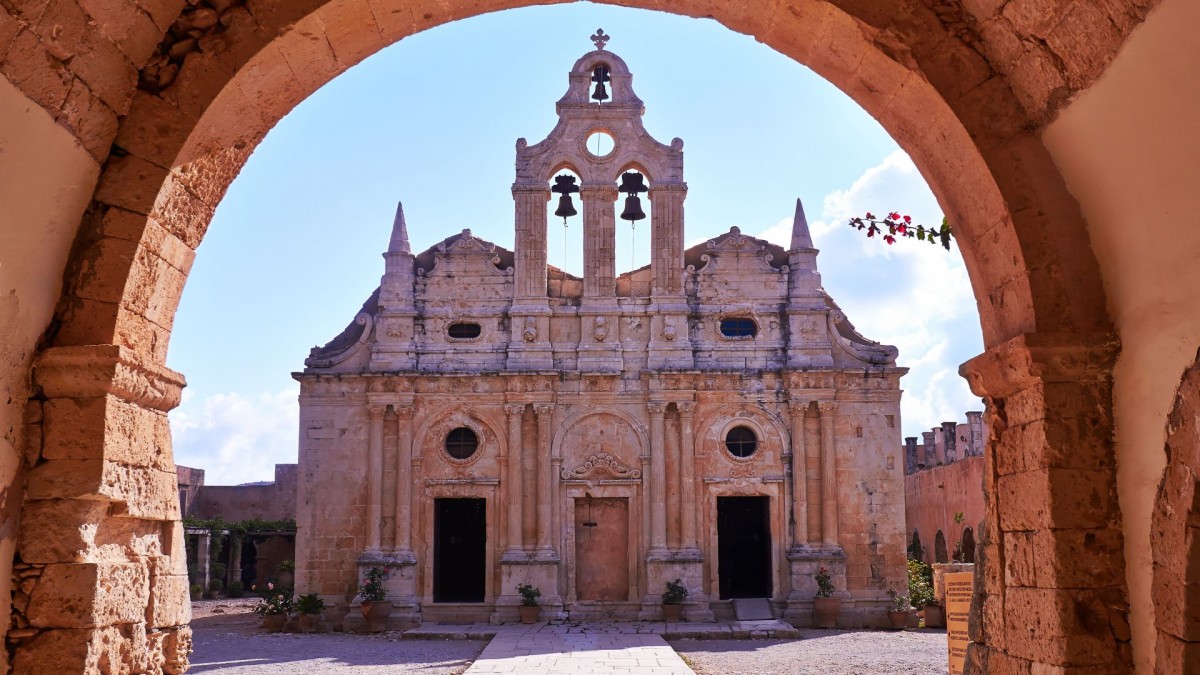Nestled near the village of Amnatos, 23 km east of Rethymno, Arkadi Monastery stands as more than just a religious site—it is a testament to centuries of history and a symbol of resilience.
Perched at an altitude of 500m on a fertile plateau adorned with olive groves, vineyards, and a variety of trees including pine, cypress, and oak, the monastery paints a picturesque scene. Surrounding the monastery, charming chapels dot the landscape, and the scenic Arkadi Gorge begins its winding journey.
While the exact founding date remains elusive, lore suggests that Byzantine Emperor Arkadios established
the monastery in the 12th century. Another tale attributes the name to a monk named Arkadios, the
monastery's supposed founder. Notably, the Turks referred to it as Tsanli Manastir, translating to
"beneficiary bell," signifying Arkadi Monastery's unique privilege to ring its bells.
The original church within the monastery, dedicated to Saint Constantine, now lies in ruins in the
northwestern part of the enclosure. The monastery's imposing walls rendered it impregnable, attracting
rebellious Cretans seeking refuge. Arkadi became a beacon of support, offering education, national identity,
ethics, and financial aid to the local community.
Arkadi Monastery holds a pivotal place in Cretan history, serving as the theater for the tragic 1866 battle
that paved the way for the island's liberation in 1898. Recognizing its significance, UNESCO designated
Arkadi as a European Freedom Monument, cementing its status as the most historic and sacred monastery
in Crete.
Source: www.cretanbeaches.com
